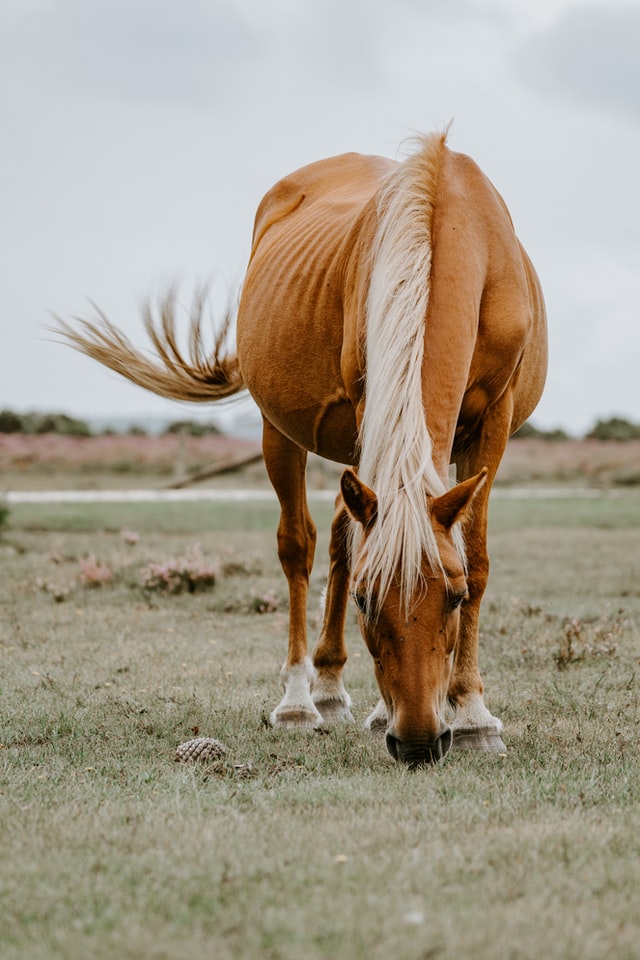The Genetics of Horse Color: How Selective Horse Breeding Determines Coat Color
The color of a horse’s coat depends on what genes are inherited, and in many cases is bred for specifically. This overview gives possible genotypes for every coat color.
Horses come in a variety of colors. All of these colors are modifications, dilutions, or variations of two colors: chestnut and black. The colors bay, dun, buckskin, perlino, grulla, seal brown, red dun, palomino, cremello, and true white are all fairly easy to predict in horse breedings, and also to trace with some knowledge of color genes.

A Lesson in Genetics
A “locus” is a location on a chromosome for two genes. “Alleles” are the two variations of a gene: a recessive or a dominant gene. At every locus, two alleles are present. If two dominant alleles are present (i.e. BB), the gene pair is homozygous dominant.
If one dominant and one recessive allele is present (Bb), the gene pair is heterozygous, and the dominant gene is expressed. If both alleles are recessive (bb), the gene pair is homozygous recessive, or simply recessive.
If a dominant gene is present in the pair, the trait that is associated with it will be expressed. If both genes are recessive, the recessive trait is expressed.
The Major Loci of Horse Color Genes

In horses, the major loci for color are E, A, D, C, and W.
- E: E (dominant) is the allele for black coat color; e (recessive) is for chestnut. An Ee gene pair would be black; an ee would be chestnut.
- A: a modifier to black coat color. A (dominant) is the allele for restricting black color to the legs, mane, and tail, thus creating bay; at (recessive modified) does not restrict the black quite so much, resulting in a dark brown or seal brown horse; and a (recessive) does not affect black at all. A horse with an Aa gene pair would be a bay; an at a gene pair would be dark brown; and an aa gene pair would be black. Alleles at the A locus have an unknown or unnoticeable effect on chestnut color.
- D: a dilution gene, sometimes called the “dominant dilution”. D (dominant) will dilute black/dark seal brown to grulla; also will dilute bay/light seal brown to dun; also will dilute chestnut to red dun. A gene pair of dd will not affect the base color.
- C: also a dilution gene, sometimes called the “palomino dilution”. The CC genotype shows no dilution. The C ccr genotype will give one dilution; the ccr ccr genotype gives a double dilution. This is a case of “incomplete dominance,” where both the dominant and recessive alleles are expressed in the phenotype. One dilution of bay makes buckskin, two dilutions make perlino. One dilution of seal brown makes diluted seal brown (a lighter version), but two dilutions is unknown. One dilution of chestnut makes palomino, and two dilutions make cremello. The C dilution gene has an unknown effect on black coat color.
- W: the white gene. It is dominant to all other color genes, and it is suspected that a homozygous white gene (WW) results in a lethal gene and fetuses do not survive to birth. A heterozygous white gene (Ww) results in a white horse: a horse with pink skin, white hair, and colored eyes. (An albino lacks all color, and would have colorless eyes as well.) A homozygous recessive white gene (ww) results in no modification of the horse’s color, and the horse will be black, bay, brown, etc. according to the genes at the other major loci. For more information on white and gray horses, please see Difference between White and Gray Horses.
Other Modifying Loci of Horse Color Genes

There are other loci specific for color, such as G (responsible for graying), Rn (roan), T (tobiano pattern in paints), O (overo pattern in paints), F (mane and tail color similar to body color), S (silver dappling), and a few others are responsible for Appaloosa patterning.
Possible Genotypes for Horse Color
- Black: EE or Ee, aa, dd, CC
- Chestnut: ee, dd, CC
- Palomino: ee, dd, C ccr
- Cremello: ee, dd, ccr ccr
- Red Dun: ee, DD or Dd, CC
- Grulla: EE or Ee, aa, DD or Dd, CC
- Bay: EE or Ee, AA or Aa or A at, dd, CC
- Dun: EE or Ee, AA or Aa or A at, dd, CC
- Buckskin: EE or Ee, AA or Aa or A at, dd, C ccr
- Perlino: EE or Ee, AA or Aa or A at, dd, ccr ccr
- Seal Brown: EE or Ee, at at or at a, dd, CC
- Dun or Brown Grulla: EE or Ee, at at or at a, DD or Dd, CC
- Diluted Seal Brown: EE or Ee, at at or at a, dd, C ccr
From these genotypes, it is possible to predict what colors will be produced between a mated pair, using a Punnett square. For instance, a cross between a cremello and a chestnut will produce 100% palominos. A cross between a palomino and a chestnut will produce 50% chestnuts, 50% palominos. A cross between two palominos will produce 50% palominos, 25% chestnuts, and 25% cremellos.
These 13 horse colors are the most basic and common. Predicting colors of future horses by using the coat colors of existing horses can be fun, and this guide to color genotypes will make it easy!
Information in this article was referenced against J. Warren Evans’ “The Horse,” second edition, published by W.H. Freeman in 1990.






